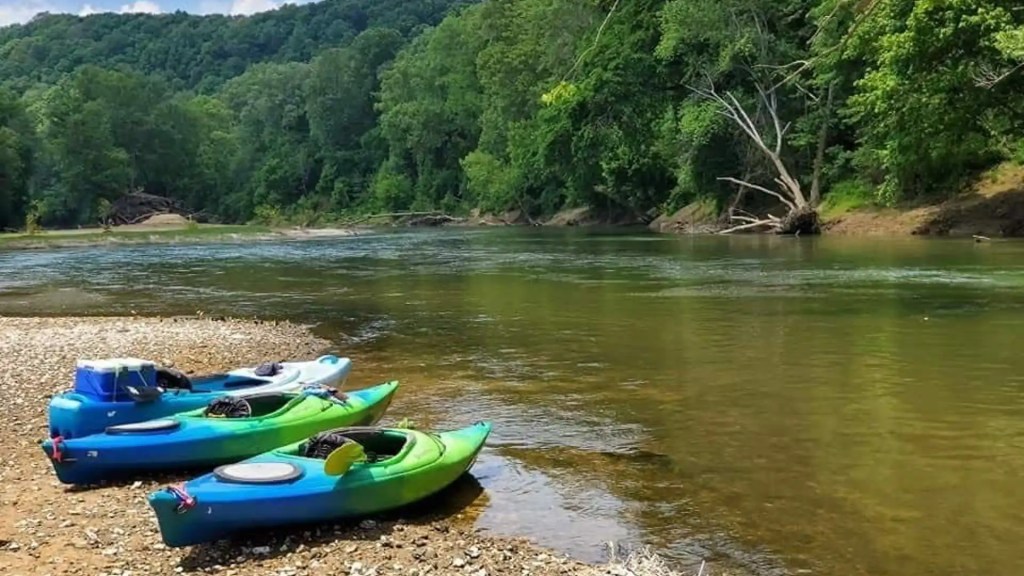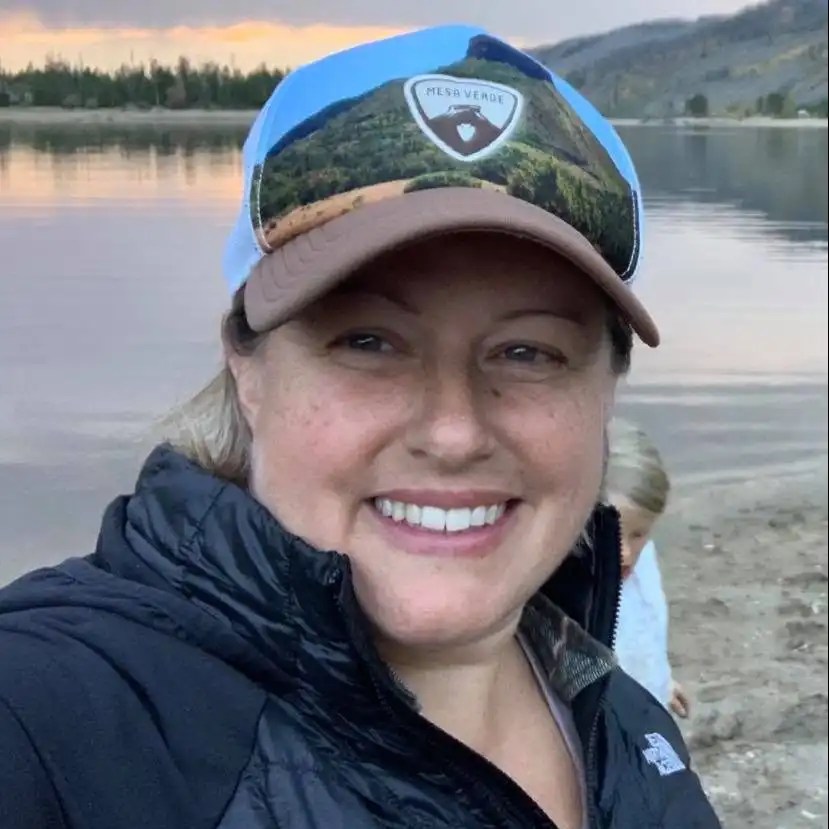
Kayaking is a great on-the-water activity that exposes you to beautiful scenery different from an on-the-land view. Whether you stick to flat-water paddling on a lake or move into the thrill of whitewater, a day on the water is never a bad day. Here are some tips for your first experience in a kayak.

Gear up
First things first, you will need a kayak. Kayaks come in different shapes and sizes depending on what kind of kayaking you will be doing. Kayaks can be hard sided or inflatable.
Beyond a kayak, the paddle is the second most important piece of gear you need. Focus on two things when picking a paddle for those first-time expeditions: the width of the kayak you will paddle and the length of your torso. Size charts can help you choose the right size paddle, and many paddles are adjustable. Refer to a chart or check with the rental staff if you need some guidance. In general, if your torso is over 28 inches, the paddle length should be 200 centimeters or above. If under 28 inches for torso height, the paddle length should be under 200 centimeters. There are different styles of paddle, as well, depending on the kind of paddling you want to do. Make sure your paddle style and length match the type of kayaking you plan to do.
A properly fitting PFD is the next critical piece of equipment you need for kayaking. You want the PFD to fit snugly, but not so much that it impedes your ability to paddle properly. Children should wear a child-size PFD. The right size/properly fitting PFD is important to ensure that the PFD doesn’t ride up and block your ability to see or inhibit any movement needed to get back to safety.
A pump is necessary if you have an inflatable kayak. A patch kit is also invaluable to bring with you, especially in your kayak.
Proper clothing is also an important part of your kayak adventure. You will want to dress for the water temp and not the air temp. In that case, a wetsuit or dry suit might be your best choice. Avoid cotton, and wear layers that have sun protection. Choose clothes that allow freedom of movement and can handle tougher conditions. Be sure your PFD fits comfortably over your clothes. Water shoes (think Chaco) or water booties are important to wear. This will help protect your feet while getting in and out of the kayak.
Additional items to bring:
- Water and snacks
- Sunscreen
- Hat, sunglasses and other sun protection
- Bug spray
- Whistle/signal device
- Dry bag
- First-aid kit
- Towel
- Dry clothes for after paddling
Extras (may depend on location):
- Helmet
- Spare paddle
- Knife
- Self-rescue device
- Waterproof map or compass
- Spray skirt
- Bilge pump to extract water

Check the weather
“Some people use the four W’s (weather, wind, water, waves) as an easy way to remember environmental hazards they might experience,” said Nik White, owner of Whitewater Workshop in Golden, Colo., where he teaches kayaking, pack rafting and water rescue. “If it is going to be a windy day, plan to paddle into the wind first so that it can just bring you back to the beach when you get tired. Many people will just float and let the wind push them, and then they’ll have to work much harder at the end of the day when they are tired. Paddling into the wind also makes it easier to stay perpendicular to any waves. Kayaks are least stable when waves hit them from the side. Weather and water are both related to temperature and exposure and, as recommended above, dress for the water, not the air,” said White.

Pick a good location
When you are just starting out with kayaking, you want to be sure to pick a location that meets your ability level. Look for flatwater, like a small lake or pond where you can see the opposite shoreline. Choose a place that has no (or light) powerboat traffic to limit encountering unnatural waves. “Flat water, like at a lake, makes for an easier place to learn,” said White. “Moving water, rivers, add hazards like currents, rocks and waves and may require a shuttle vehicle to bring you back to the start. Even very slow-moving water can pose serious hazards if you don’t know what to look for.”

Plan for a short trip
Your first kayak adventures should be short adventures. Bodies of water close to home, or that you may be familiar with for other reasons, are good choices for those first times out. Fatigue can set in quickly when out in the water, especially if you’re fighting any wind or currents. Keep in mind that as far as you paddle out, you also have to paddle that far back in.
If you live in the mountains, summer thunderstorms and strong winds are common in the afternoon, so keep that in mind when choosing a location. A nice, sunny day without wind or rain in the forecast is ideal.

Play by the rules
Each location you paddle at will have specific rules, including locations where you can paddle and designated paddling times. Be familiar with the rules, as well as the potential hazards, before you put your kayak in the water.
Here are some other basic rules:
- Always wear a PFD.
- Wear a helmet when location and conditions call for it.
- Check the weather and water conditions before you head out.
- Inspect your equipment before you enter the water.
- Do not paddle alone.
- Drugs, alcohol and open water do not mix.
- Be honest about your ability level and comfort in the water.
“Wearing a PFD is a top-level category,” said White. “It is that important in my opinion, even for people who know how to swim. The vast majority of paddling accidents occur when people aren’t wearing PFDs or aren’t wearing them correctly. Even if there aren’t rules saying that you need one, you should still wear it!”
Communication while in a boat isn’t always the easiest. To be safe, learn some of the basic hand signals:
- Hold the paddle horizontally above your head to signal “stop.”
- A hand on top of the head signals that the paddler is OK.
- A paddle waving side to side means that you are in need of help.
- Hold the paddle vertically to signal “all clear.”

Simple technique goes a long way
One of the hardest parts of kayaking is just getting in and out of the kayak easily and safely. If you are on shore, line up your kayak so it is parallel to the shoreline. Put the paddle just behind the seat or cockpit rim of the kayak. Place yourself in front of the paddle. Squat down and grab the rear of the cockpit and grip the paddle shaft with hands behind your back. Tip the kayak toward you with both hands, with the paddle blade grounded. The paddle blade should remain in contact with the bottom of the shore with pressure. Keep the pressure on as you place one leg into the kayak. Settle into the seat and lift the other leg in.
Once you move into the seat, keep your weight low. Place the paddle horizontally across your lap. Push off from shore with your hands, or use your paddle if you can’t reach with your hands.
An alternative way to get into the kayak on shore is to straddle it. Lower your butt to the seat and then pull your legs in using one foot at a time.
If you are getting onto your kayak from a dock, make sure your kayak is parallel to the dock. Put your paddle into the boat within grabbing distance from the seat. Try to find the lowest point on the dock closest to your kayak and have a seat. Put your feet in first and then lower yourself into the kayak and onto the seat. Once you are seated comfortably, take some quick paddle strokes to move away from the dock.
To sit in the kayak properly, sit up straight. Your legs should be out in front of you with a slight bend to your knees. If your kayak has foot pegs, use those to rest your feet on. Adjust the foot pegs, if needed, so that you are not too cramped or stretched out.
Proper paddling form will not only help keep you safe, but it will also help with efficiency and keep you from getting tired quickly. Proper form begins with holding the paddle properly. You want to hold the paddle correctly by placing your hands on the shaft a bit farther apart than shoulder width. You will want to be sure the concave of the blade is facing you — a common rookie mistake for new paddlers and SUPers.
You will want the blade to slice through the water vertically. Your knuckles should be pointed upward. Be sure to not grab the shaft too tightly. Relax your grip so you don’t expend any unnecessary energy.
To do a basic paddle forward, place the paddle into the water near your feet. Lean forward and twist your torso. Pull the paddle toward your seat and take it out of the water. Use this stroke on both sides.
To turn your kayak to the right, paddle on your left. To turn it left, paddle on the right. To stop the kayak, place your paddle in the water and hold it in place. To turn the kayak around (reverse), start by looking behind you to be sure you won’t run into anyone or obstacles. Use the back of the paddle blade and place the paddle near your hips. Push the paddle toward the bow of your kayak. Your trunk should turn as you are pushing, and your elbows should be bent. Pull the paddle from the water when it is about even with your knees. Repeat the process on the opposite side.
Good technique comes over time and with experience. “With all paddle strokes, the more you twist your torso, the more efficient you will be and the less tired your arms will get,” said White. “Our core muscles are much larger and stronger than our biceps, so using your core to twist is going to be much easier. When you’re doing it right with enough twist, you’ll actually feel your body move back and forth inside the PFD.”

Bring some friends
There are several reasons to kayak with friends or family. First, it is safer to kayak with others in case an emergency happens. Second, experiences are more fun when you can share them with others. Explore new areas, see new things and make kayaking another adventure you love to experience. Tours, classes or meetups are a great way to check out new gear, learn tips and maybe find some new friends to paddle with.
Having friends along can also help if you get stuck in an emergency or uncomfortable position. “If the waves get larger than you can handle, or you want some extra stability while you look around or shift positions in your boat, you can create a ‘party barge’ with one or more other kayaks to make all of you more stable,” recommended White. “Pull up next to each other, place your paddles across both of your legs or cockpits and hold each other’s boat close. You can’t really paddle to make much progress when barged up, but you’ll all be much more stable.”





